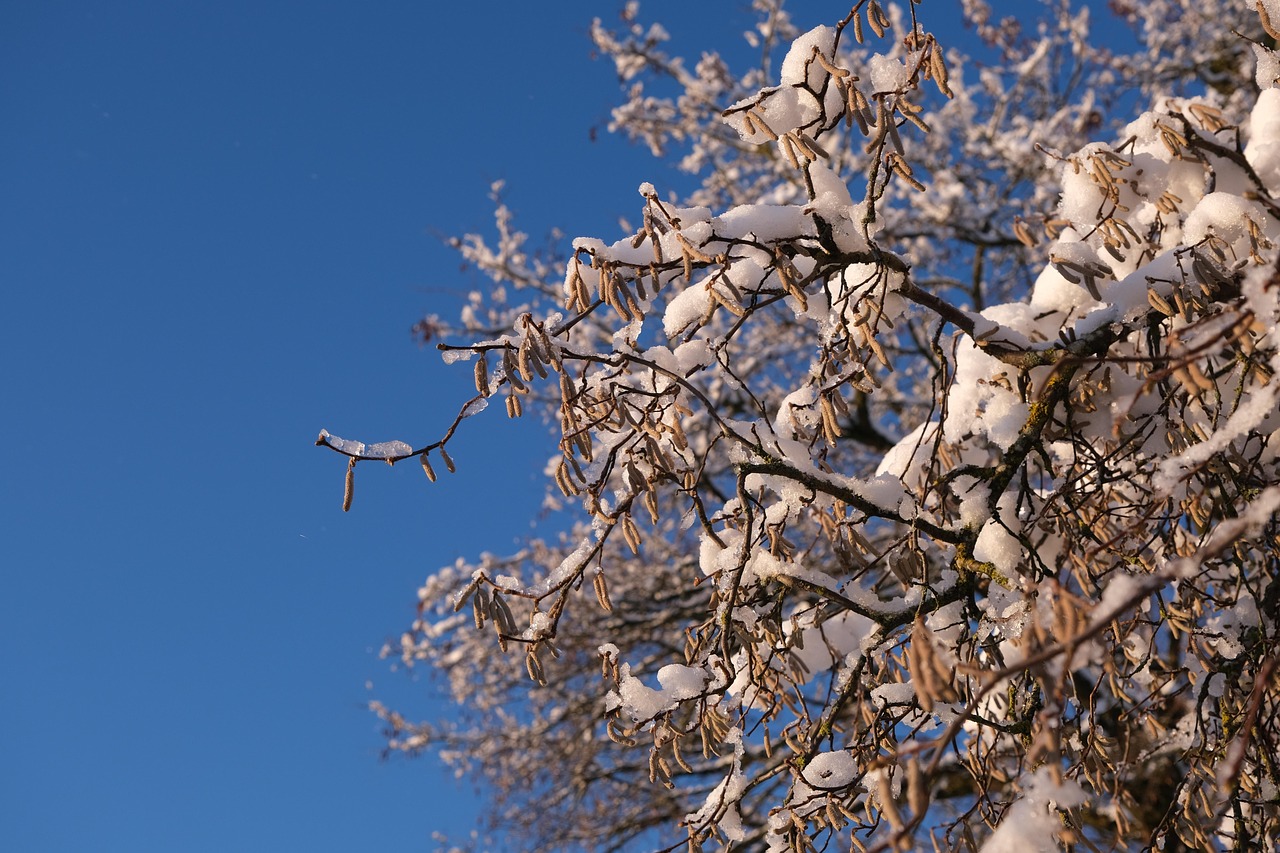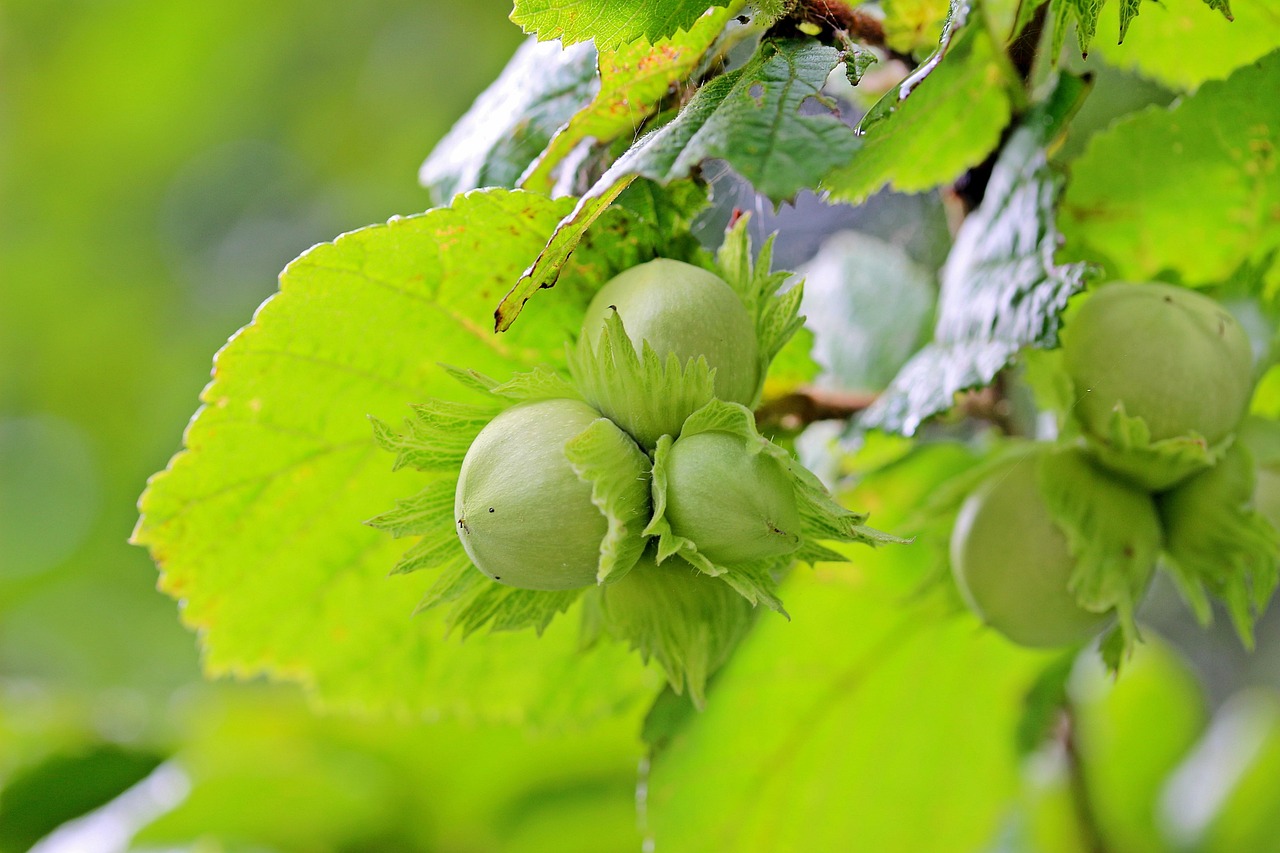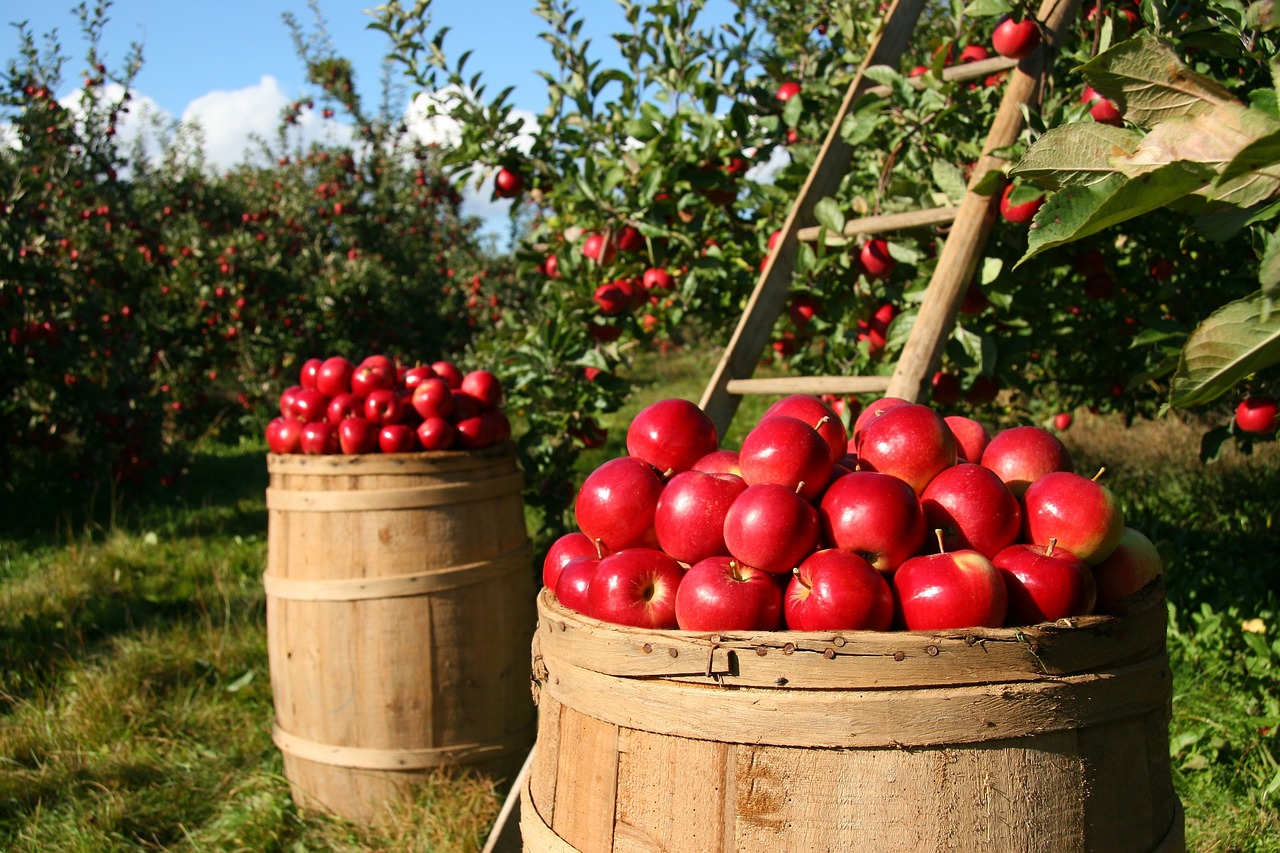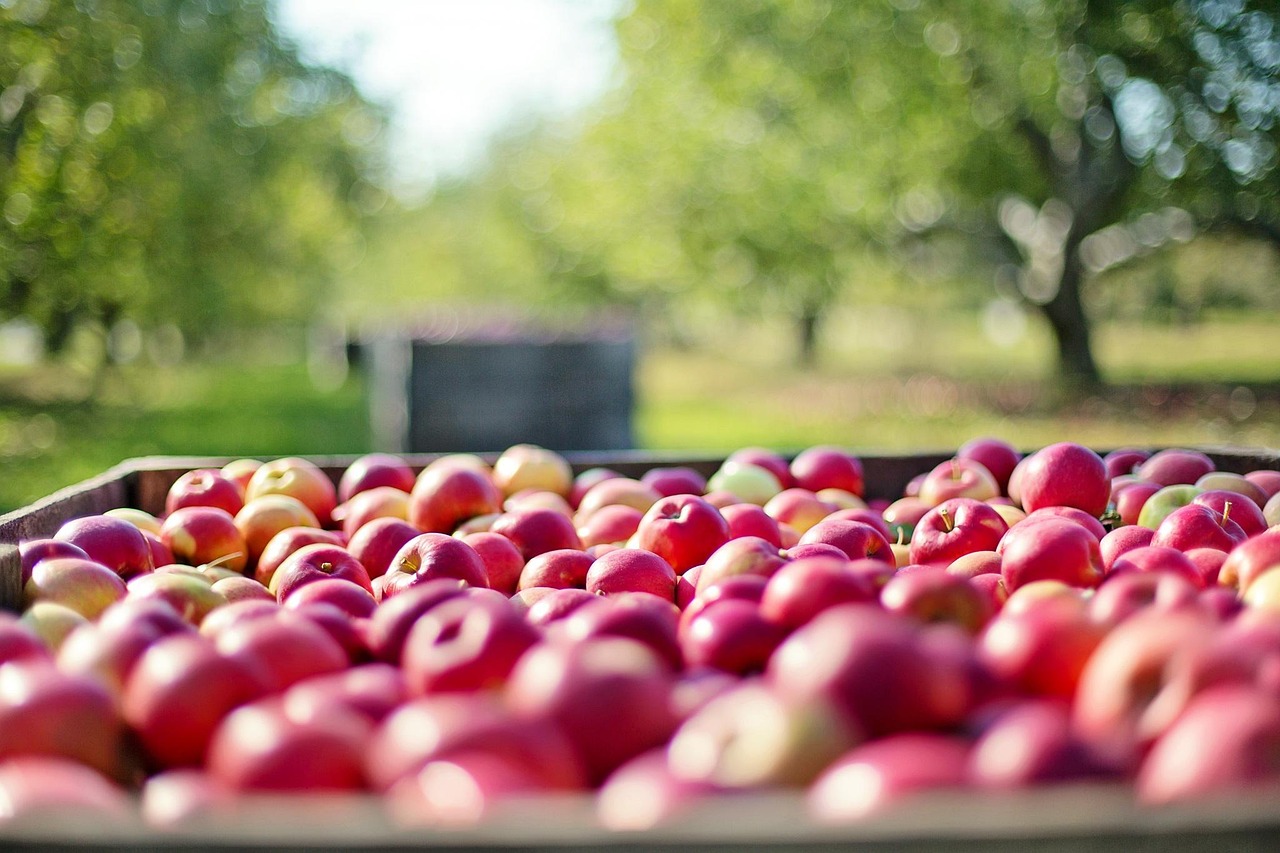Hazelnut orchard pruning is essential for hobby farmers to maintain healthy trees, improve yield, and enhance the quality of nuts. Proper techniques help shape the tree structure, encourage new growth, and facilitate easier harvesting.
Hobby farming has become a popular pastime, allowing individuals to engage with nature and produce their own food. Among various crops, hazelnuts stand out for their rich flavor and nutritional value. However, like any fruit-bearing tree, hazelnuts require regular maintenance to thrive, and pruning is a critical aspect of this care.

Pruning involves selectively removing certain parts of the tree to promote healthier growth. This practice can seem daunting for beginners, but understanding its significance and techniques can make it manageable. Effective pruning leads to better air circulation, sunlight penetration, and reduced disease risk in hazelnut orchards.
The Importance of Pruning Hazelnut Trees
Pruning hazelnut trees serves multiple purposes. Firstly, it helps maintain the tree’s shape and size. This is particularly important for hobby farmers who may have limited space. Secondly, pruning encourages new growth, which is crucial for fruit production. Healthy new shoots can lead to more nuts in the following seasons.
Moreover, regular pruning can reduce the risk of diseases by improving airflow through the canopy. When branches are too dense, moisture can accumulate, creating an environment conducive to fungal infections. By managing the tree’s structure, farmers can promote a healthier orchard overall.

Key Benefits of Pruning
- Improves air circulation and sunlight exposure
- Encourages healthy new growth
- Enhances nut quality and yield
- Reduces disease risk
- Facilitates easier harvesting
When to Prune Hazelnut Trees
The timing of pruning is crucial to its success. For hazelnut trees, the best time to prune is during the dormant season, typically late winter or early spring before new buds appear. Pruning during this period minimizes stress on the tree and allows it to recover quickly as it enters the growing season.
It is also important to note that pruning in the fall can lead to winter damage. Trees that are pruned too late may be more susceptible to cold temperatures and frost damage. Therefore, planning ahead is essential for hobby farmers aiming for a successful harvest.
Signs That Your Hazelnut Trees Need Pruning
Recognizing when to prune your hazelnut trees can significantly impact their health and productivity. Here are some signs that your trees may need attention:

- Overgrown branches that obstruct sunlight
- Dead or diseased branches
- Excessive crowding in the canopy
- Pest infestations on certain branches
- Poor nut production in prior seasons
Basic Pruning Techniques for Hobby Farmers
Understanding basic pruning techniques can empower hobby farmers to manage their hazelnut orchards effectively. Here are some essential methods:
Thinning Cuts
This technique involves removing entire branches from their point of origin. Thinning cuts improve air circulation and light penetration within the tree’s canopy. It is particularly useful for controlling tree size and shape.
Heading Cuts
Heading cuts shorten branches by cutting them back to a bud or lateral branch. This stimulates growth in new shoots, which will produce nuts in subsequent seasons. It is essential to make clean cuts at a slight angle to encourage proper healing.

Removing Dead or Diseased Wood
Regularly inspect your hazelnut trees for signs of dead or diseased wood. Removing these branches can prevent the spread of disease and promote overall tree health. Always use clean, sharp tools to avoid infection.
Tools for Pruning Hazelnut Trees
Having the right tools is vital for effective pruning. Here are some essential tools every hobby farmer should consider:
| Tool | Description |
|---|---|
| Pruning Shears | Ideal for cutting small branches and stems. |
| Loppers | Used for thicker branches that pruning shears cannot handle. |
| Saw | A small hand saw may be necessary for larger limbs. |
| Gloves | Protect hands while handling tools and branches. |
By utilizing these tools properly, hobby farmers can ensure clean cuts and minimize damage to their hazelnut trees during pruning sessions.
Pruning Techniques for Different Growth Stages
Understanding the growth stages of hazelnut trees is essential for effective pruning. Each stage has specific needs that can influence how and when you prune. Here is an overview of the primary growth stages:
- Young Trees
- Mature Trees
- Overgrown Trees
Pruning Young Trees
When hazelnut trees are young, typically within their first few years, the focus should be on shaping the tree. This establishes a strong foundation for future growth. Hobby farmers should aim for a balanced structure with multiple well-spaced branches, which helps prevent overcrowding as the tree matures.
During this stage, consider the following techniques:
- Central Leader System: Choose one main stem to develop as the leader. This promotes vertical growth and a strong trunk.
- Lateral Branch Selection: Select several lateral branches that are evenly spaced around the trunk. Remove competing branches that may hinder the tree’s shape.
- Light Pruning: Conduct light pruning to encourage growth without stressing the young tree. Focus on removing any damaged or crossing branches.
Pruning Mature Trees
Mature hazelnut trees require different pruning approaches to maintain health and productivity. The goal is to ensure that sunlight and air can penetrate the canopy effectively, promoting better nut production. Here are some techniques to apply:
- Thinning: Remove older branches that are no longer productive. This helps to rejuvenate the tree and encourages new growth.
- Heading Back: Shorten long branches to promote bushier growth and increase nut production in lower areas.
- Dead Wood Removal: Regularly remove dead or diseased wood to maintain overall tree health and improve aesthetics.
Pruning Overgrown Trees
If your hazelnut trees have become overgrown, they may require more extensive pruning. This situation can occur if regular maintenance has been neglected. Here are steps to take when dealing with overgrown trees:
- Assess the Tree Structure: Identify which branches can be removed without harming the overall shape of the tree.
- Gradual Reduction: Avoid heavy cuts in one season. Gradually reduce the height and width over a few years to prevent shock.
- Focus on Health: Prioritize removing any diseased or dead wood first before addressing size issues.
Common Mistakes in Pruning Hazelnut Trees
Even experienced hobby farmers can make mistakes while pruning hazelnut trees. Being aware of common pitfalls can help avoid detrimental effects on tree health and productivity. Here are some common mistakes to watch out for:
- Over-Pruning: Removing too much foliage or wood can stress the tree and reduce nut yield.
- Poor Timing: Pruning at the wrong time of year can lead to damage from frost or hinder new growth.
- Neglecting Sanitation: Failing to disinfect tools can introduce diseases that harm your trees.
Seasonal Care Following Pruning
After pruning, it is crucial to provide appropriate care for your hazelnut trees to promote recovery and growth. Here are some key practices to follow through the seasons:
Spring Care
As trees begin to grow in spring, monitor them closely. Apply a balanced fertilizer to provide essential nutrients that support new growth. Additionally, check for any signs of pest infestations or diseases, as these can become prevalent during this time.
Summer Care
In summer, watering becomes critical, especially if rainfall is limited. Mulching around the base of the trees helps retain moisture and suppress weeds. Continue monitoring for pests and consider using organic pesticides if necessary.
Fall Care
In fall, prepare your trees for winter by reducing water significantly as they enter dormancy. Conduct a final inspection for diseases or pests before colder weather sets in. Additionally, consider applying a layer of mulch around the base to protect roots from freezing temperatures.
The Role of Soil Health in Pruning Success
The health of your soil plays a significant role in the success of your hazelnut orchard and ultimately affects how well your trees respond to pruning. Healthy soil contributes to strong root systems, which support vigorous growth after pruning.
Here are some tips for maintaining soil health:
- Soil Testing: Conduct regular soil tests to determine pH levels and nutrient availability.
- Add Organic Matter: Incorporate compost or well-rotted manure to enhance soil structure and fertility.
- Avoid Compaction: Limit foot traffic around tree roots to prevent soil compaction, which can hinder water and nutrient absorption.
By focusing on soil health alongside proper pruning techniques, hobby farmers can cultivate thriving hazelnut orchards that yield abundant nuts year after year.
Pest and Disease Management in Hazelnut Orchards
Maintaining the health of hazelnut trees goes beyond pruning and soil care; it also involves effective pest and disease management. Pests and diseases can significantly impact the overall yield and quality of nuts. Hobby farmers must be vigilant and proactive in their approach to safeguard their orchards.
Common Pests Affecting Hazelnut Trees
Several pests can pose threats to hazelnut trees. Here is a list of some common pests to watch out for:
- Filbert Worm: This caterpillar feeds on the nuts, damaging them and reducing yield.
- Hazelnut Aphids: These small insects suck sap from the leaves, leading to wilting and reduced plant vigor.
- Spider Mites: They thrive in hot, dry conditions and can cause stippling on leaves, ultimately affecting photosynthesis.
- Scale Insects: These pests attach themselves to branches and feed on sap, weakening the tree over time.
Integrated Pest Management (IPM)
Implementing an Integrated Pest Management (IPM) approach is essential for controlling pests effectively while minimizing harm to beneficial organisms and the environment. The IPM strategy includes:
- Monitoring: Regularly inspect your trees for signs of pests or damage. Early detection is key to effective management.
- Cultural Practices: Maintain healthy trees through proper watering, fertilization, and pruning to enhance their resistance to pests.
- Biological Control: Introduce natural predators, such as ladybugs or parasitic wasps, that can help control pest populations.
- Pesticide Use: If necessary, choose organic pesticides that target specific pests without harming beneficial insects.
Common Diseases Impacting Hazelnut Trees
Diseases can also wreak havoc on hazelnut orchards. Here are some common diseases to monitor:
- Corynespora Leaf Spot: This fungal disease causes leaf spots and can lead to premature leaf drop.
- Powdery Mildew: Characterized by a white powdery coating on leaves, this fungal infection thrives in humid conditions.
- Bacterial Blight: This disease leads to leaf spots, wilting, and dieback of branches.
Disease Management Strategies
Effective disease management requires a combination of cultural practices and timely interventions:
- Proper Pruning: Ensure good air circulation by pruning adequately. This reduces humidity levels around the foliage, making it less favorable for fungal infections.
- Sanitation: Clean up fallen leaves and debris in the orchard to eliminate potential sources of infection.
- Tolerant Varieties: When planting new trees, consider selecting varieties known for their resistance to specific diseases.
The Role of Fertilization in Tree Health
A well-balanced fertilization program is crucial for maintaining the health of hazelnut trees. Nutrients support robust growth, which enhances the tree’s ability to withstand pests and diseases. Here are some key considerations for fertilizing hazelnut orchards:
Nutrient Requirements
Hazelnut trees typically require several essential nutrients, including nitrogen (N), phosphorus (P), potassium (K), calcium (Ca), and magnesium (Mg). Conducting soil tests will help determine the nutrient levels in your soil and guide your fertilization program.
Types of Fertilizers
There are various types of fertilizers available, each with its advantages. Here are some common options:
- Granular Fertilizers: Slow-release fertilizers provide a steady supply of nutrients over time. They are easy to apply but may take longer to show effects.
- Liquid Fertilizers: These fertilizers can be applied through irrigation systems for quick absorption by roots. They are especially useful during critical growth periods.
- Organic Fertilizers: Composed of natural materials like compost or manure, these fertilizers improve soil health over time while providing essential nutrients.
Fertilization Schedule
A proper fertilization schedule can enhance tree growth and nut production. Here is a general timeline for fertilizing hazelnut trees:
- Early Spring: Apply a balanced fertilizer as buds begin to swell.
- Mid-Summer: A second application can be beneficial for supporting nut development during this crucial period.
- Fall: Avoid fertilizing late in the season to prevent new growth that may be damaged by frost.
The Impact of Weather on Pruning Practices
Weather conditions play a significant role in determining the timing and effectiveness of pruning activities. Hobby farmers should consider local climate patterns when planning their pruning schedules.
Understanding Seasonal Weather Patterns
The four seasons bring varying weather conditions that can influence tree health. Here’s how each season impacts pruning practices:
- Spring: As trees begin to bud, warmth encourages new growth. Pruning should occur before this period to avoid stressing the tree.
- Summer: While summer is generally not recommended for pruning due to potential heat stress, minor adjustments can be made if necessary.
- Fall: Pruning in the fall can expose trees to winter damage; it is best to avoid heavy pruning during this season.
- winter: Dormant season is ideal for major pruning tasks as trees are less stressed and recover more quickly.
By considering these weather-related factors, hobby farmers can make informed decisions about when and how to prune their hazelnut trees effectively.
Additional Considerations for Successful Hazelnut Orchard Management
Beyond pruning, several additional factors contribute to the success of a hazelnut orchard. Hobby farmers should pay attention to these elements to ensure their trees remain healthy and productive throughout the growing season.
Water Management
Water is a vital resource for hazelnut trees. Understanding the water needs of your orchard is crucial for optimal growth and nut production. Here are some key points regarding water management:
- Irrigation Systems: Consider installing a drip irrigation system to provide trees with consistent moisture while minimizing water waste.
- Soil Moisture Monitoring: Regularly check soil moisture levels, especially during dry spells. This helps prevent both overwatering and underwatering.
- Mulching: Use organic mulch around the base of trees to retain soil moisture and suppress weed growth.
Crop Rotation and Diversity
Incorporating crop rotation and diversity can benefit soil health and reduce pest and disease pressures. Here are some practices to consider:
- Intercropping: Planting complementary crops alongside hazelnuts can improve biodiversity and provide additional income streams.
- Cover Crops: Utilize cover crops during the off-season to prevent soil erosion, enhance soil structure, and add organic matter back into the soil.
Harvesting Hazelnuts
The harvest period is one of the most exciting times for hobby farmers. Proper harvesting techniques are essential for maximizing yield and quality. Here’s what you need to know:
When to Harvest
Hazelnuts are typically ready for harvest when the outer husk begins to turn brown and nuts start falling from the trees. This usually occurs in late summer to early fall, depending on the variety and local climate conditions.
Harvesting Techniques
There are different methods for harvesting hazelnuts, including:
- Hand Harvesting: This method involves shaking branches to dislodge nuts, which can then be collected from the ground. It is labor-intensive but allows for careful selection of high-quality nuts.
- Mechanical Harvesting: For larger orchards, mechanical harvesters can efficiently gather nuts from the ground after they have fallen. This method saves time but may require a significant investment in equipment.
Post-Harvest Care
After harvesting, proper care ensures that hazelnuts maintain their quality:
- Cleaning: Remove debris and damaged nuts before storing to prevent spoilage.
- Drying: Ensure nuts are adequately dried to prevent mold growth. Ideally, nuts should be dried to a moisture content of around 8-10%.
- Storage: Store in a cool, dry place in airtight containers to maintain freshness and flavor.
Final Thoughts
Cultivating a hazelnut orchard as a hobby farmer offers many rewards, from enjoying homegrown nuts to connecting with nature. By understanding and implementing effective pruning techniques, managing soil health, addressing pest and disease issues, and ensuring proper harvesting practices, hobby farmers can create a thriving hazelnut orchard.
Consistent care throughout the seasons, combined with a commitment to learning and adapting best practices, will lead to successful nut production for years to come. Whether you are just starting out or looking to refine your existing orchard management techniques, the information provided in this article serves as a comprehensive guide to help you achieve your goals in hazelnut farming.
As you embark on or continue your hazelnut farming journey, remember that patience and persistence are key. Your efforts will not only yield delicious nuts but also contribute to a sustainable agricultural practice that benefits both you and the environment.
